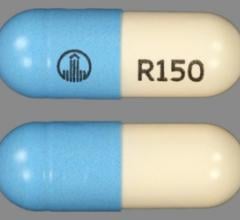
August 28, 2017 — Bristol-Myers Squibb Company and Pfizer Inc. announced results from an analysis of real-world data pooled from four large U.S. insurance claims databases. Among non-valvular atrial fibrillation (NVAF) patients, Eliquis (apixaban) was associated with a lower risk of stroke/systemic embolism (SE) and lower rates of major bleeding compared to warfarin for the overall population as well as for each of the selected high-risk patient sub-populations. The analysis was presented at the European Society of Cardiology (ESC) Congress 2017, Sept. 26-30 in Barcelona, Spain.
In this real-world analysis, patients with NVAF receiving either Eliquis or other oral anticoagulants were identified through the U.S. Optum, MarketScan, PharMetrics and Humana databases. The data was pooled after propensity score matching (PSM) was completed within each database. Select high-risk subgroups were stratified by age, CHA2DS2-VASc or HAS-BLED score, congestive heart failure (CHF), coronary artery disease (CAD) and peripheral artery disease (PAD). The CHA2DS2-VASc score is a method for estimating stroke risk in patients with non-valvular atrial fibrillation, and the HAS-BLED score helps to estimate risk of major bleeding in patients with NVAF. In the subgroup analysis, based upon these variables, Eliquis was associated with lower risk of stroke/SE and lower rates of major bleeding compared to warfarin after adjustment for confounding factors.
This observational cohort analysis adds to the body of evidence for Eliquis, which notably includes the Phase 3 ARISTOTLE clinical trial in which the reduction in risk for stroke/SE, the primary efficacy endpoint for ARISTOTLE, was generally consistent for Eliquis compared with warfarin across various patient subgroups.
In this analysis, Eliquis was associated with lower risk of stroke/SE and lower rates of major bleeding across these risk factors compared to warfarin (38,470 propensity score matched pairs), with a mean follow-up of six months.
This observational, retrospective analysis was conducted in patients aged 18 years and older who initiated Eliquis or warfarin from Jan. 1, 2013 to Sept. 30, 2015. In each database, 1:1 PSM was used to balance age, gender, region, baseline comorbidities and prescription comedications. Baseline characteristics were balanced with a mean age of 71 years, mean CHA2DS2-VASc score of 3.0 and mean HAS-BLED score of 2.6. After PSM within each database, the resulting patient-specific results were pooled. Cox proportional hazards models were used to estimate the hazard ratios of stroke/SE and major bleeding (identified using the first listed diagnosis of inpatient claims) within one year of therapy initiation for each subgroup. The statistical significance of the interaction between treatment and the specific subgroup(s) was evaluated.
In this analysis, given the nature of claims data, diagnoses were identified through ICD-9-CM codes, and drug prescriptions were identified through prescription claims. Missing values, coding errors and lack of clinical accuracy may have introduced bias into the study. Although some of the datasets contain information from different insurance plans that do not overlap at the plan level, others are employer-based claims datasets, which may contain duplicate patient records when pooled together; however, the number of such duplicates is likely to be small — based on a published estimate of 0.5 percent — and therefore unlikely to have any important effect on results.
Read the related article "Advantages and Disadvantages of Novel Oral Anticoagulants."
Read the related article "Most Atrial Fibrillation Patients Don’t Get Preventive Drug Before Stroke."
For more information: www.escardio.org


 August 28, 2023
August 28, 2023 








